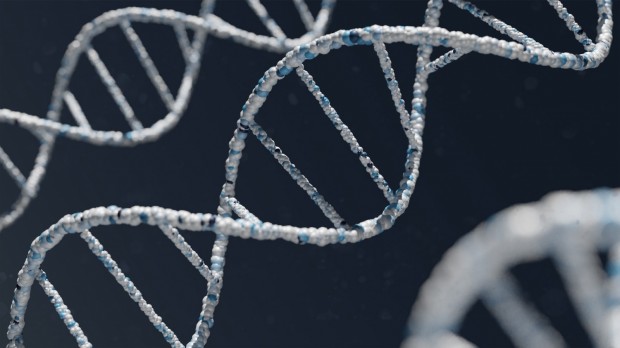Photo : Warren Umoh via Unsplash
Having progressed over the past 10 years, whole genome sequencing has become prevalent in both basic and clinical research. The last decade has seen the cost and speed of whole genome sequencing decline, making gene editing technologies more accessible to scientists working in precision medicine and diagnostics. On top of this, the length of sequencing reads has grown exponentially, enabling scientists to detect and sequence complicated structural variants and examine epigenetic alterations.
As the whole genome sequencing space evolves, the life sciences journal BioTechniques publishes updates so scientists, researchers, lab workers, and other industry professionals can keep up with these developments.
Here, we'll take a look at the pivotal role that epigenetics plays in whole genome sequencing and explore how scientists can identify DNA methylation in the human genome.
Epigenetics' Role in Genome Research
Epigenetics is the study of heritable phenotype changes that don't involve alterations in the DNA sequence. This type of study refers to the link between chemical modifications and physical conformational changes that scientists make to DNA to affect gene expression. An individual's experiences or environment can impact these changes.
Epigenetics technologies have developed over recent years, enabling the emergence of contemporary sequencing techniques like nanopore sequencing and other long-read sequencing techniques. Therefore, scientists can now access large data sets, carry out rapid sequencing, and analyze individual cells. Long-read sequencing techniques also allow scientists to sequence unlimited bases, whereas short-read sequencing techniques only allow scientists to sequence 75-300 bases. As a result, scientists can now sequence a whole chromosome from end to end.
When individuals are exposed to a pathogen, they gain new DNA or RNA that can interact with their cells and modify the epigenome in these cells. Pathogens can also activate an immune response, which, in turn, activates the recruitment of immune cells and can cause inflammation. This inflammation can affect the epigenome of the cells at the site of infection. And, as a virus can have genes that can be epigenetically repressed or activated, some viruses have their own epigenetic regulations. Therefore, epigenetics play a crucial role in research into cancer and infectious diseases like hepatitis b.
As epigenetic modification continues to progress, we will likely see the cost of epigenetics reduce, making epigenetics more accessible, standardized, and key to disease research.
How Scientists Identify DNA Methylation in the Human Genome
Alongside non-coding RNAs and histone modifications, there are three main types of epigenetic modification. One of these, DNA methylation, affects disease states like cancer, neurological disorders, and autoimmunity and biological processes like development and aging. 5-methylcytosine (5mC) DNA methylation, the addition of a methyl group to a cytosine nucleotide, is the most widely studied and well-characterized epigenetic mechanism in mammalian genomes.
DNA methylation is characterized by the addition of a methyl group to a DNA molecule. The addition of a methyl group to a DNA molecule doesn't alter a nucleotide sequence, but this type of epigenetic mechanism can have profound effects, including phenotypic alterations. For example, the modification can impact the way that the liver metabolizes a drug.
Epigenetic modifications have the power to switch off genes, making them crucial to regulating gene expression. Historically, difficulties involving intact detection have made it challenging to analyze methylation. PCR eliminates base modifications, so their detection via traditional sequencing technologies requires scientists to complete library preparation steps like bisulfite conversion. Bisulfite treatment fragments the DNA, which damages nucleic acids, resulting in short sequencing reads. However, this process can lead to variable results and isn't as reliable as modern sequencing technologies.
Nanopore Sequencing
Conversely, scientists don't need PCR to carry out nanopore sequencing, which captures methylation across the genome. Nanopore sequencing works by passing DNA through biological pores in an electroresistant membrane. Scientists measure the change in electrical resistance as the bases pass through the pores and use basecalling algorithms to identify DNA (or RNA) sequences in real time.
Nanopore sequencing enables scientists to preserve and directly sequence DNA/RNA modifications alongside the nucleotide sequence without having to perform additional library preparation steps. Scientists can also employ nanopore sequencing to determine and phase long-range epigenetic changes, single nucleotide polymorphisms, and structural variants in a single data set. The long-read capability of this technique allows scientists to phase these calls to study patterns of inheritance, which is central to disease-associated methylation changes.
Scientists leverage nanopore sequencing to identify variants, monitor the prevalence and distribution of these variants, and examine how strains of disease relate. With this information, they can develop drug treatments and vaccines. And nanopore sequencing's simple workflow, real time nature, and easy access make it easier than ever for scientists to sequence and analyze genomes.
Reviewing Lab Methods and Techniques
Since publishing its inaugural issue in 1983 as the first journal to review laboratory methods and techniques instead of treatments, BioTechniques quickly became a trusted source for scientists and researchers who specialize in the life sciences, physics, chemistry, computer science, and plant and agricultural science.
Today, users continue to use the open-access, peer-reviewed journal and its multimedia website to keep up with techniques like next-generation sequencing, polymerase chain reaction, western blotting, CRISPR gene editing, and chromatography. On the BioTechniques website, users can partake in industry discussions and access a variety of high-quality resources, from articles, webinars, and videos, to Talking Techniques podcasts, infographics, interviews, and eBooks.
BioTechniques is one of Future Science Group's 34 industry-leading journals, which include titles like Nanomedicine, Regenerative Medicine, and Future Oncology. The progressive publisher has made more than 50,000 articles available in print and online, and users download over 5 million articles each year.
* This is a contributed article and this content does not necessarily represent the views of universityherald.com









